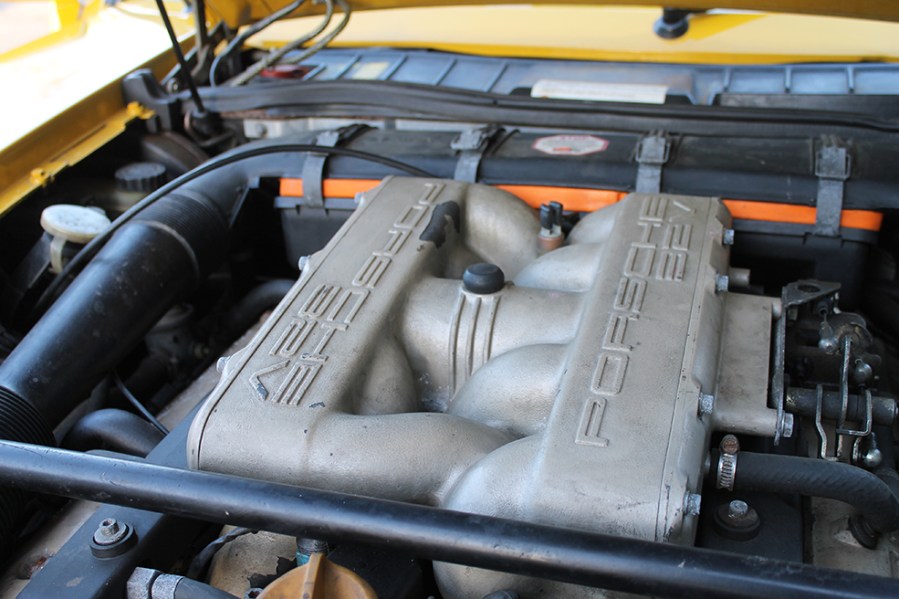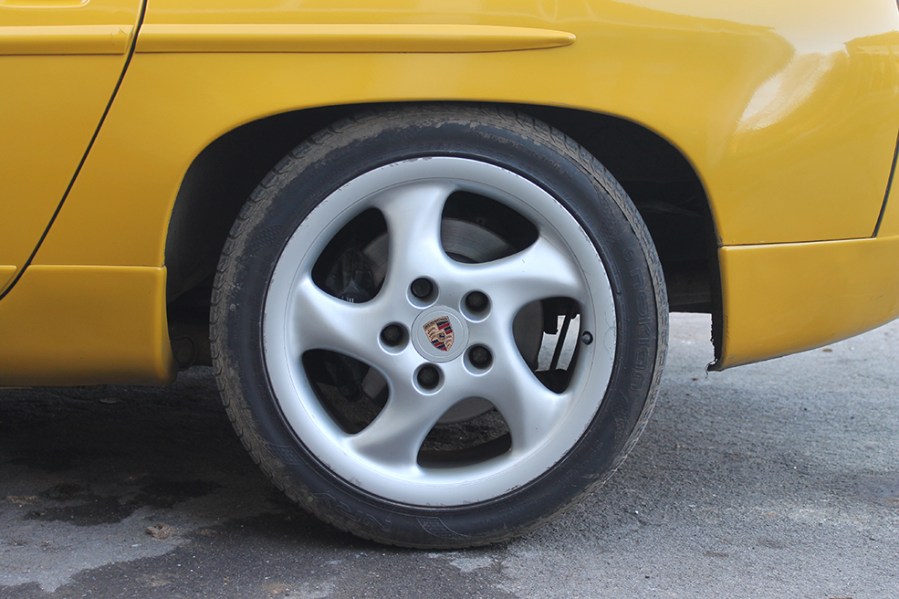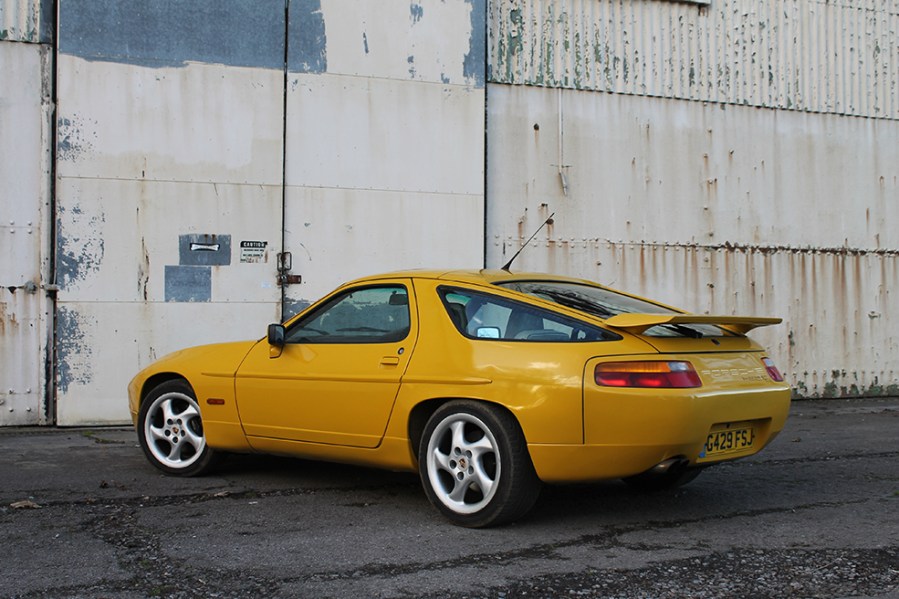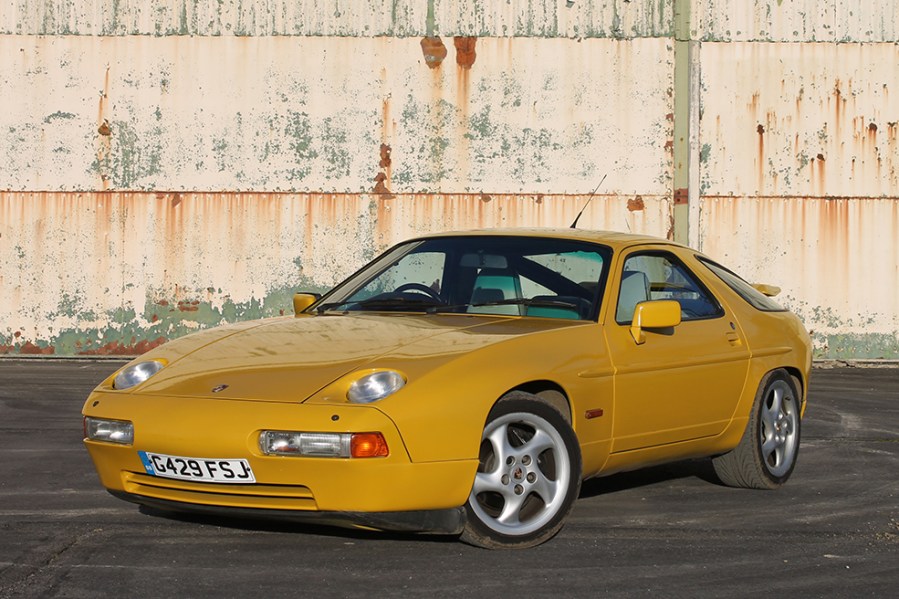The Porsche 928 is immensely capable, but you’ll need to buy with your head – not your heart – if financial misery is to be avoided
Words: Chris Randall Images: James Howe
The 911 was already a decade old when Porsche’s decided to expand its model range – or even replace its iconic rear-engined sports car altogether. CEO Peter Schutz ultimately put a stop to that latter plan, but the 1977 debut of the 928 was a significant moment for the company nonetheless. Powered by an all-aluminium, front-mounted V8 engine and sporting 2+2 seating, the luxurious and well-equipped grand tourer went on sale the following year and made a big impression.
Styled by Wolfgang Möbius under the watchful eye of Anatole ‘Tony’ Lapine, the aerodynamic appearance and production car first of integrated polyurethane bumpers was a world away from the 911, helping the 928 to be crowned Car of the Year for 1978 – the first sports car to receive the big prize.
While the fundamental recipe remained the same over the car’s long career, Porsche introduced a wide range of updates over the years, starting with the 928S with a V8 enlarged from 4.5 to 4.7 litres and pushing power up from 240bhp to 300bhp. The S2 of 1984 boosted power again, with 1988’s S4 model boasting a 5.0-litre DOHC engine and 320bhp.
The GT was added a year later and then both would be replaced by the ultimate incarnation, the GTS – complete with 5.4-litre V8 and 350bhp. That model brought production to a close in 1995 after a run of 61,056 cars, with 4500 delivered to the UK.
Bodywork
The shape may have changed a little over the years and gained aerodynamic addenda but the construction remained the same – a steel structure with aluminium wings, doors and bonnet, and polyurethane bumpers. Be sure to establish a car’s past in terms of accident repairs or restoration, bearing in mind that attempting the latter in a major way won’t make economic sense on early models that are worth notably less than the likes of an S4 or GTS. Any signs that body or paint repairs have been done poorly should have you walking away.
Corrosion-wise, it’s the underneath that tends to be vulnerable but you should also examine the inner and outer sills and watch for rot bubbling up around the screens. You’ll pay more than £300 for a replacement headlight or rear lamp unit, so you’ll not want to see any damage, and don’t forget to check that the headlights raise and lower okay; problems could be just the cabin switch (around £130) or a relay (a similar cost), but it might require more expensive intervention.

Engine and transmission
Whichever flavour of 928 you prefer, the health of the big V8 is paramount – so getting it checked by a specialist is money well spent. A solid service history from one is equally crucial. Oil usage of 500 miles per litre is fairly common, and make sure that neither oil nor coolant are escaping or mixing and that there’s absolutely no sign of overheating.
Poor running caused by fuel/ignition maladies could see repair costs escalate alarmingly; one specialist pointed out that the diagnosis and repair of the systems used during 928 production can be problematic due to the skills required and a lack of parts. Easier to sort is a vibration at idle caused by engine mounts bring past their best; they’re a couple of hundred pounds each.
The cooling system needs to be spot-on too, as an overhaul is very pricey (a new radiator is comfortably into four figures) and fresh coolant is required every four years to protect the all-aluminium unit from internal corrosion. The cambelt needs replacing every four years or 60,000 miles, along with the water pump, at a cost of £1000-£1500; the work must be carried out by someone who knows what they’re doing, and while valves and pistons won’t meet should the belt break on a 4.5-litre engine, they will on the others. Even a well-maintained engine could be ready for some level of overhaul towards 150,000 miles, so budget accordingly. Early GTS engines suffered cylinder liner issues, so check the paperwork for evidence of replacement.
As for transmissions, automatics accounted for more than 80 per cent of production – early ones were three-speed with a four-speeder arriving in 1980 via the 928S, and all were sourced from Mercedes-Benz. They rarely give much trouble as long as the oil and filter have been changed every 60,000 miles, but do check for oil leaks. Of more importance is an annual check of the torque tube and flex plate, as incorrect tension of the latter can wear the engine’s crankshaft thrust bearing with disastrous consequences. Be very wary if there’s no evidence of the check being done. If you do find a manual example, it’s a case of checking for tired synchromesh and a notably stiff gearchange caused by the seizure of the linkage; clutch replacement is around £1000.

Suspension, steering and brakes
With such potent performance on offer, you’ll certainly want to be satisfied that all’s in order in the braking department. ABS was standard from the S4 onwards, so be sure it works as it should – faulty wheel sensors are the likeliest issue and they cost around £200 each. Replacing the discs and pads is pricier and parts alone will set you back around £1000 if all four corners need replacing. Little-used examples could be suffering from corroded and seized calipers, something that particularly afflicts the GTS where a steel insert within the aluminium caliper rusts and causes the pads to stick. Check all models for brake pipe corrosion, too.
As for the suspension, the clever ‘Weissach’ rear axle employed across all generations endowed the 928 with agile and secure handling, so expect nothing less today. A neglected example in need of a complete overhaul is going to become a very expensive proposition, and if bushes, springs and dampers all need replacing you’re looking at a few thousand pounds in parts alone. While you’re underneath, it’s wise to check the subframes and rear suspension arms for any sign of corrosion.
The hydraulically-assisted steering isn’t inherently problematic, but it’ll need scrutinising for fluid leaks from perished pipework and for vagueness caused by worn front ball joints and upper wishbone bushes. Replacement parts are predictably expensive, with a rebuilt steering rack in the region of £1000 and an exchange pump around half that.

Interior and trim
Whether you prefer the eye-catching and very period ‘Pasha’ cloth or leather is a matter of personal taste, but either way it’s best to avoid a cabin in especially scruffy condition. Water getting past the sunroof and rear hatch seals can also lead to trim damage, and you’ll sink a few thousand pounds into a complete interior renovation.
Of even greater importance is checking the electrics, as getting to the bottom of problems can be frustrating and costly in equal measure. There’s an extensive array of fuses, relays and ECUs located in the passenger footwell and damp getting in will lead to corrosion and all manner of trouble. If the car you’re looking at displays a variety of electrical problems, then it really is best avoided.
Even if there’s no sign of such bothers, you’ll want to be sure that the switchgear and equipment are still working correctly, not forgetting the air-conditioning which can be hugely expensive to get working again and may well have been ignored.

Porsche 928: our verdict
A chat with the Porsche Club GB’s 928 registrar, David Hemmings, reveals a notable gulf in values between early and late models. A reasonable 928 or S with 100,000 miles is around £12,000 in sound condition, with very good ones nearer to £15,000; but for an S4, those numbers are more like £20,000 and £25,000. A GTS is worth twice that, and for all of them it’s mileage and condition that should be prioritised – and manuals will always be worth more.
We’ve seen cars advertised for more than these figures though, so chat with a club or specialist before committing. With the relative cost of restoration in mind, you’re better off buying a good S4 than a ropey 928 or S that’s going to need masses of expenditure.
As a cheaper, longer-legged alternative to the default Porsche 911, the 928 makes a lot of sense. It also compares favourably with contemporary rivals including the Jaguar XJ-S and Mercedes SL. Its V8 may not be entirely in-tune with the times and current fuel prices but we reckon the hefty running costs are entirely worth it.


















